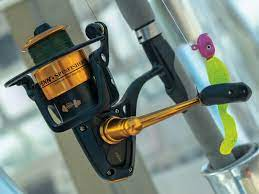Best fluke jigging rod
A fluke fishing jig can be a lot of fun—and there are plenty of good choices out there. So, what makes a fluke jig unique?
If you’re fishing for big bass, why not try jigging for fluke? In other words, you don’t want a bait that sinks when it hits the water; you want a bait that actually rises. Most anglers use spinnerbaits for fluke fishing, but I prefer to go with a spinning rod, jigging rod, and small spinners. Why? Because I like to catch big bass on the fly.
In today’s edition of Best Fluke Jigging Rod, we will be looking at the best, most affordable, and highest quality Fluke jigging rods, and give you tips on choosing the right and best fluke jigging rod for you.

What is a good rod for fluke fishing?
Fishing rods are a great place to start in identifying a good or fun rod for fluke fishing. Fluke fishing rods generally come with a number of different features. Some may be specifically designed for fluke fishing, while others are made to be general purposes. The more features a rod has, the more features it tends to have at the expense of other features. For example, a general-purpose rod may have a lot of extra weight, but the amount of extra weight is not directly related to fluke fishing.
Fluke fishing rods are typically used for catching flounder, but some may be used for catching bluefish, mackerel, striped bass, and other species of fish. A fluke rod is a type of fishing rod that is specifically used for catching fluke c. Fluke fishing rods are generally lighter than those used for other types of fishing. Most rods are either made of graphite or carbon fiber. The weight of these rods depends on the type of material used. Graphite rods are generally lighter than carbon fiber rods. Other materials used to make a rod include stainless steel, aluminum, and brass. Rods may be made of other materials, but they tend to be heavy. Rods used for fluke fishing usually have a few features. Some rods have a reel seat. Others have a butt plate. Others may have a weight indicator. You can choose the one that fits your needs and your style best.

What size rod is best for jigging?
Jigs are made of steel and plastic, and they come in many different sizes. There are fishing rods in the 1/2, 3/8, and 1/4 inch range, and if you have ever fished for trout in the U.S. or you especially went on party boats. , you’ve surely seen people using jigs made of either 1/4 or 3/8 inch steel rod. The monofilament line is expensive but has stretch and a thicker diameter. Of course, there are many rods made in different materials and sizes but this article will focus on the two most common sizes of rods.
You have to figure out what size and how much weight of jig you are going to use. Jigs come in various sizes and shapes. Heavier jigs fall faster. You’ll need jigs that are appropriate for the size of fish you are fishing for. For example, if you are targeting smallmouth bass, you might choose a jig with a longer shank than one that’s designed for larger fish. You want your bait to move through the water as smoothly as possible, so you might want to try a smaller jig than if you were fishing for largemouth bass. Make sure that your bait is moving slowly through the water so you don’t lose your bait. The smaller the jig, the better chance you have of keeping it down in the weeds or other places where you can’t see it. It’s important to keep your bait in a place where you can see it. Also, you need to make sure that you have the right rod for the job. You need the proper rod length for the type of fish you want to catch. It’s good to check the instructions on your equipment before you head out to the lake.

Can you jig for fluke?
There is another great sales tool that’s almost forgotten. It’s called jigging. Jigging is when a fishing rod is lowered into a waterway, but then it is quickly jerked upwards and quickly pulled back down. This creates a wave that is then passed along to the fish. When this happens, the fish is startled and jumps upward. At first, the fish doesn’t know what’s happening, and when the fishing rod is quickly pulled upward and back down again, the fish gets a second jolt of surprise.
Jigging is a great method to attract fish. In addition to that, it has several other benefits too. Jigging will allow you to catch fish that would otherwise be difficult to capture. It’s also fun. All you need is a fishing rod, bait, and some patience. If you are in a place with deep water, it’s also possible that you’ll be able to catch larger fish. Another great benefit of jigging is that it’s a very easy way to catch fish. Once you learn how to do it, it’s really easy.

How do you Bucktail a fluke?
One method used to catch more fish is known as “bucking” the hook. Bucking the hook with chicken rigs is when a fish is hooked, but then quickly jerks away from the bait to avoid getting stuck. Sometimes this happens when a fish is fighting a strong current or when it is not ready to eat. To increase your chances of catching fish, you have to keep baiting your hook until you get a bite. The trick to catching fish is to reel them in before they break the line, otherwise, the fish will jerk away.
Fishing is a great hobby. It’s a lot of fun because you can get some fresh food from your fishing trip. When you go fishing, you don’t want to waste time, so you will use baits that are easy to catch. Baits are usually made out of meat or vegetable matter, and some baits even have a scent or taste.
You’ll have to keep fishing your hooks until you get a bite. After that, reel the hook in as fast as you can. If you pull too hard in the jigging world, it can cause the line to snap. The line has a limit, so don’t overuse it. It is better to have a strong line than one that’s too weak. Also, it is a good idea to keep baiting your hooks. That way, you can get a bigger fish. You will have better luck if you use different kinds of baits.


